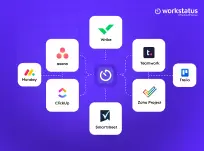Table of Contents
Time seems to fly. For employees handling multiple tasks, managing time well is essential.
Still, even the most committed teams often struggle with:
- Missed deadlines
- Distractions
- Tasks keep coming
- Changing priorities
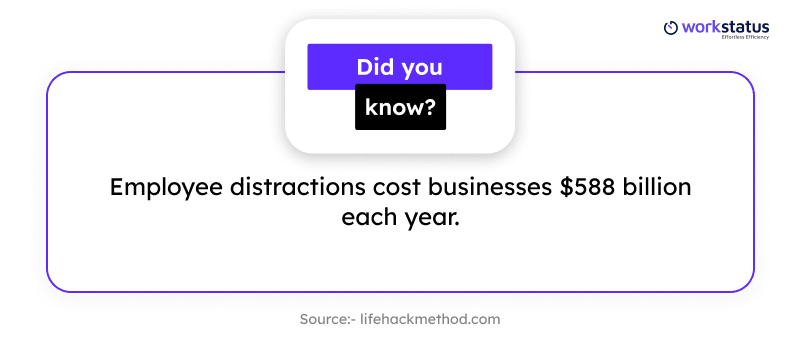 This is where time management training for employees helps. With the right guidance, employees can:
This is where time management training for employees helps. With the right guidance, employees can:
- Work more efficiently
- Stay focused
- Get more done without burning out
Understanding Time Management Fundamentals
Many people think time management is just about working faster or using fancy calendars.
But here’s the reality: simply trying to work faster doesn’t solve the problem.
An employee might look productive by tackling dozens of small tasks while their most important projects fall behind.
Traditional approaches to time management often create more problems than they solve:
- They focus on “being busy” instead of making real progress on what matters
- They ignore our natural energy cycles, forcing work when our brains aren’t ready
- They make people feel guilty about taking breaks, which actually reduces overall productivity
- They treat interruptions as the enemy, when some interruptions are valuable connections
- They assume everyone works the same way, ignoring our different strengths and styles
The truth is, watching the clock doesn’t make anyone more productive.
You need a fresh approach to time management that works with human nature, not against it.
11 Best Practices for Time Management Training for Employees
Here are 11 best practices for time management to help your team build stronger time management skills and work more efficiently every day.
1. Start with a Time Audit
Before making changes, companies need to see where time really goes. A time audit shows how workers spend their hours.
Many people think they know how they use time, but tracking shows the real data.
Steps for doing a time audit:
- Track work for one full week
- Write down everything in 15-minute chunks
- Note when you get interrupted
- Look for patterns and time wasters
This basic info helps find problem areas and makes people aware of their habits.
You can’t fix time problems if you don’t know what they are first.
2. Set Clear and Realistic Goals
Good time management starts with knowing what needs to get done. Unclear goals waste time and give poor results.
Teams work better when they know exactly what to aim for and when it’s due.
Smart goal setting means breaking big jobs into small tasks. Each goal should be clear and have a deadline.
Goals that are too hard create stress and failure. When goals are doable, workers feel good and stay focused.
Business leaders should help teams:
- Write down specific results they want
- Make goals that can be measured
- Set realistic deadlines
- Match goals with company needs
3. Use Time Tracking Tools
Basic time logs and spreadsheets quickly become abandoned because they require too much manual effort.
Employees start with good intentions but give up when logging time becomes another time-consuming task.
These outdated approaches to time tracking create frustration:
- Manual time logs are inaccurate and rely on memory.
- Spreadsheets become outdated and don’t provide actionable insights.
- Data gets collected but rarely analyzed in meaningful ways.
- Time tracking feels like surveillance rather than a productivity tool.
- Teams can’t see patterns across projects or team members.
Modern digital time tracking tool like Workstatus can provide valuable insights without the administrative burden.
Workstatus can capture data automatically and transform it into patterns that help employees make better decisions about their time.
4. Implement the Pomodoro Technique
This simple method breaks work into 25-minute focused sessions with short breaks.
It helps keep focus and prevents getting tired.
The process is easy:
- Work for 25 minutes
- Take a 5-minute break, then repeat
After four sessions, take a longer 15-30 minute break. This pattern keeps the brain fresh and engaged all day.
Companies can change the timing to fit their needs. Some teams use 45-minute sessions with 10-minute breaks.
The key is finding a pattern that works for your workplace and sticking to it.
5. Limit Multitasking
Smart businesses encourage doing one thing at a time by creating rules that reduce interruptions. This might include quiet hours, turning off notifications, or organizing workspaces to reduce distractions.
Ways to reduce multitasking:
- Close extra browser tabs
- Turn off email alerts during focused work
- Finish one task before starting another
- Group similar work together
The result is better quality work done in less time. Research shows that doing many things at once actually makes you less productive and causes more mistakes.
Teams will work better when focused on one task at a time. Jumping between tasks wastes mental energy and creates stress.
6. Prioritize with the Eisenhower Matrix
This decision tool helps teams focus on what really matters. Tasks are sorted into four groups based on how urgent and important they are.
This prevents rushing around and makes sure important long-term projects get attention.
The four groups are:
- Urgent and important (do first)
- Important but not urgent (schedule)
- Urgent but not important (give to someone else)
- Neither urgent nor important (don’t do)
Most successful people spend more time on important but not urgent tasks.
Teaching workers to use this matrix reduces stress and improves results.
Teams learn to spot truly critical tasks and avoid getting busy with work that doesn’t really help the business.
7. Create Daily To-Do Lists
Well-made daily lists keep teams focused and productive. The best lists are made the night before or first thing in the morning.
This planning time prevents wasted hours wondering what to do next.
Good to-do lists include specific tasks with time estimates. Vague items like “work on project” should be broken down into clear actions.
Each item should be something that can be finished and checked off.
Daily list tips:
- Keep to 3-5 major tasks
- Guess how long each will take
- Put most important items first
- Check and change as needed
This simple habit creates structure and feels good as tasks get completed.
8. Get Rid of Time Wasters
Every workplace has activities that eat up time without adding value.
Common time wasters include too many meetings, social media browsing, unclear communication, and messy systems.
Finding and removing these creates more time for useful work.
Start by tracking where time goes, then look for waste patterns. Meetings that could be emails, long approval processes, or old procedures all drain productivity.
Small improvements in these areas can free up lots of time.
Companies should regularly check processes and ask if each activity really helps the business.
Making rules about time wasters helps everyone stay focused on work that matters most.
9. Schedule Breaks to Avoid Burnout
Regular breaks actually make you more productive, not less. Tired people make more mistakes and work slower.
Planned rest periods help keep energy levels up all day and prevent mental tiredness.
Smart break planning includes short breaks every hour or two, plus a real lunch break. Moving around, getting fresh air, or talking briefly with others can refresh the mind.
The key is making breaks planned rather than random.
Benefits of planned breaks:
- Better focus and attention
- Less stress and burnout prevention
- Better decision making
- Happier teams
Companies that encourage proper breaks often see better overall performance and workers who stay longer.
10. Monitor Progress and Adjust
Time management training for employees isn’t a one-time thing. Regular check-ins help see what’s working and what needs fixing.
Tracking progress over time shows patterns and helps improve approaches for better results.
Monthly reviews of time tracking data, goal achievement, and productivity reports give valuable insights.
Teams can celebrate wins and fix problems before they get big. This ongoing attention keeps time management skills sharp.
Changes might involve trying new methods, updating goals, or giving more training. The key is staying flexible and responding to what the data shows.
Continuous checking ensures that time management improvements become lasting habits rather than temporary changes.
11. Encourage Continuous Learning
Time management skills get better with practice and new knowledge. Successful companies create a culture where learning about productivity is valued and supported.
This might include training sessions, book clubs, or sharing success stories.
Different methods work better for different people and situations. Encouraging trying new ways helps teams find what works best for them.
Regular skill updates keep up with changing work demands and new tools.
Learning opportunities can include:
- Online courses and webinars
- Sharing sessions with coworkers
- Research on industry best practices
- Trial periods with new tools or methods
When teams see time management as an ongoing skill to develop rather than fixed rules, they keep improving and adapting to new challenges.
How Workstatus Helps With Time Management
1. Automatic Time Tracking
![]() Guessing how time is spent leads to wrong estimates and wasted hours. Teams often think projects take 30% less time than they actually do.
Guessing how time is spent leads to wrong estimates and wasted hours. Teams often think projects take 30% less time than they actually do.
Workstatus’ tracking shows the real picture of where time goes:
- Shows which projects actually take the most hours
- Spots tasks that eat up too much time and might need reassigning
- Creates clear accountability without watching over shoulders
- Ends the daily “what did I work on?” confusion
When it comes to employee time management, accurate data beats guesswork every time.
2. Activity Monitoring
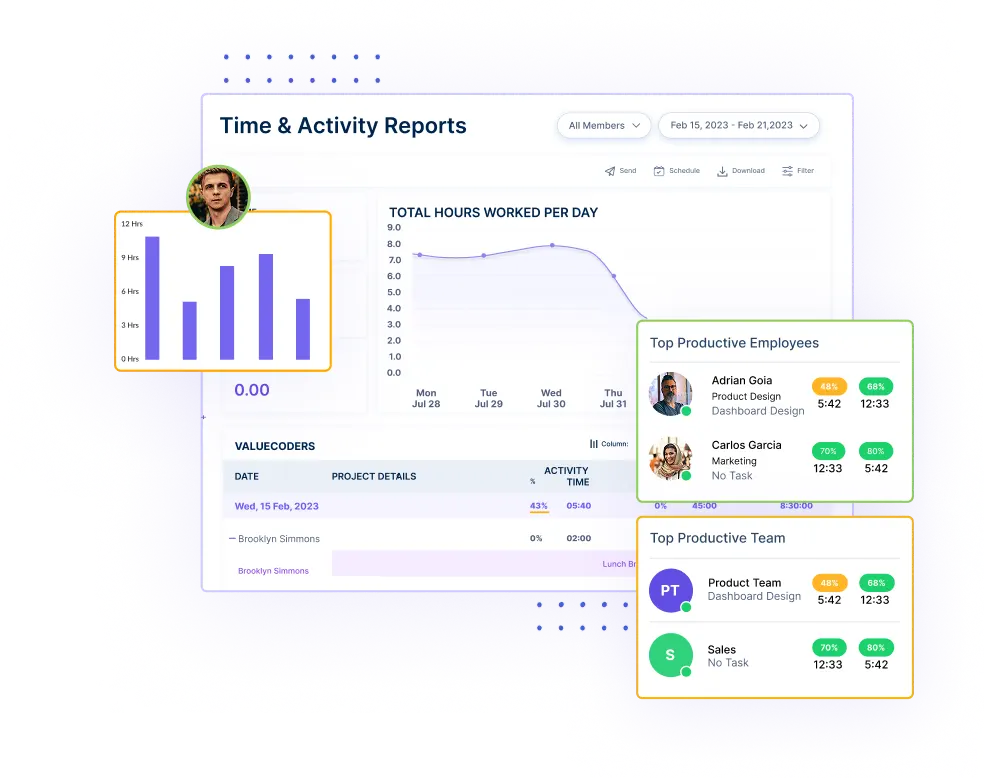 Workers often don’t notice when they’re stuck in slow work patterns. Someone might spend hours on a task that should take minutes.
Workers often don’t notice when they’re stuck in slow work patterns. Someone might spend hours on a task that should take minutes.
User Activity Monitoring helps fix these issues:
- Spots when someone is struggling before deadlines are missed
- Shows which tools and websites are eating up the workday
- Helps separate real work from busywork
- Creates chances for managers to help before small issues become big problems
Good time management skills for employees develop faster when they can see their actual work patterns.
3. Detailed Timesheets
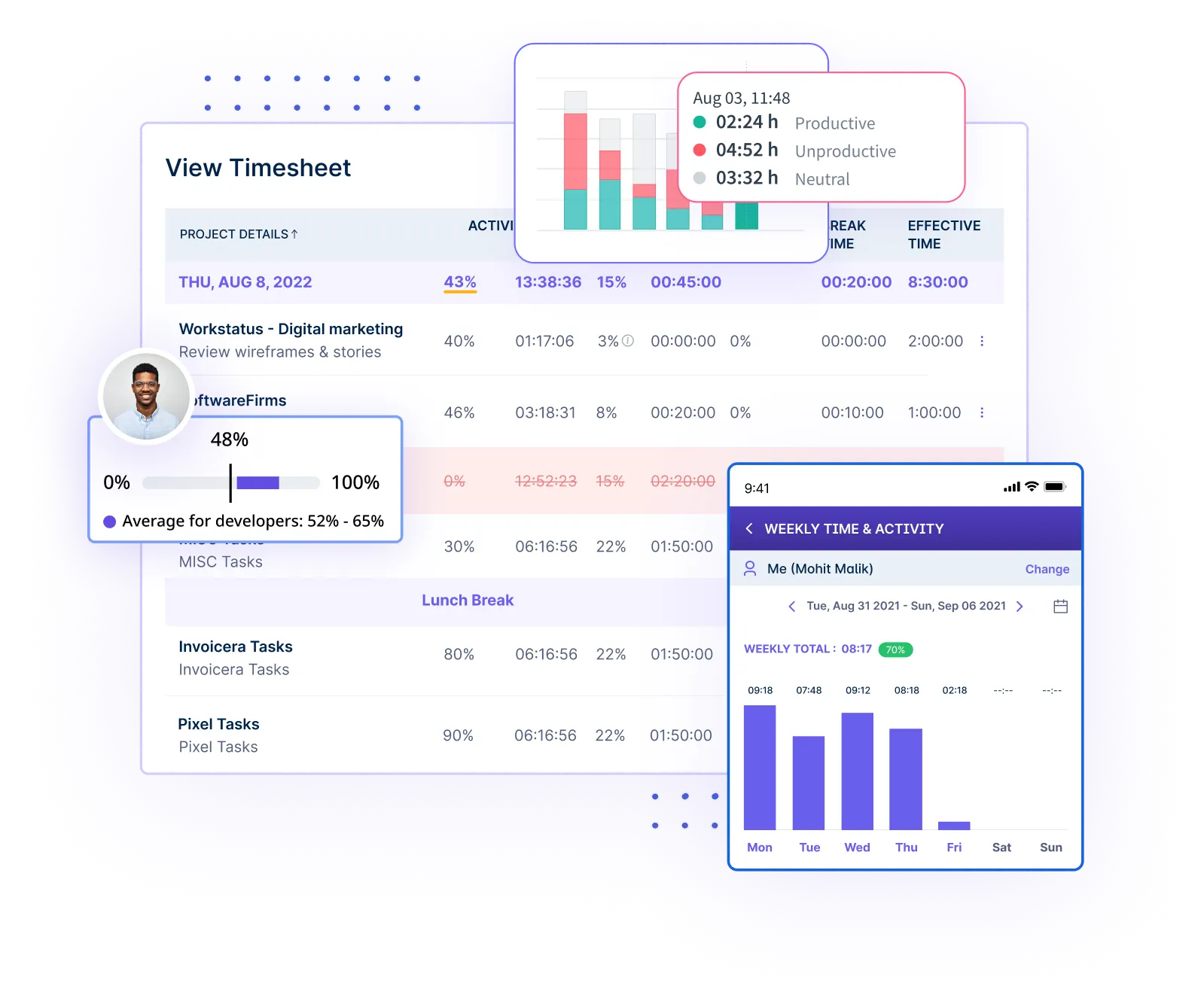 Paper or spreadsheet timesheets waste about 4.5 hours every month for each worker.
Paper or spreadsheet timesheets waste about 4.5 hours every month for each worker.
That’s over a week of lost time per year.
Workstatus’ automatic timesheets cut this waste:
- Create reports on their own based on actual work done
- Sort time by project, task, and client without extra work
- Show clear pictures of where time went throughout the week
- End disagreements about hours worked or projects finished
Effective time management training should include using better tools that save time instead of creating more work.
4. Idle Time Detection
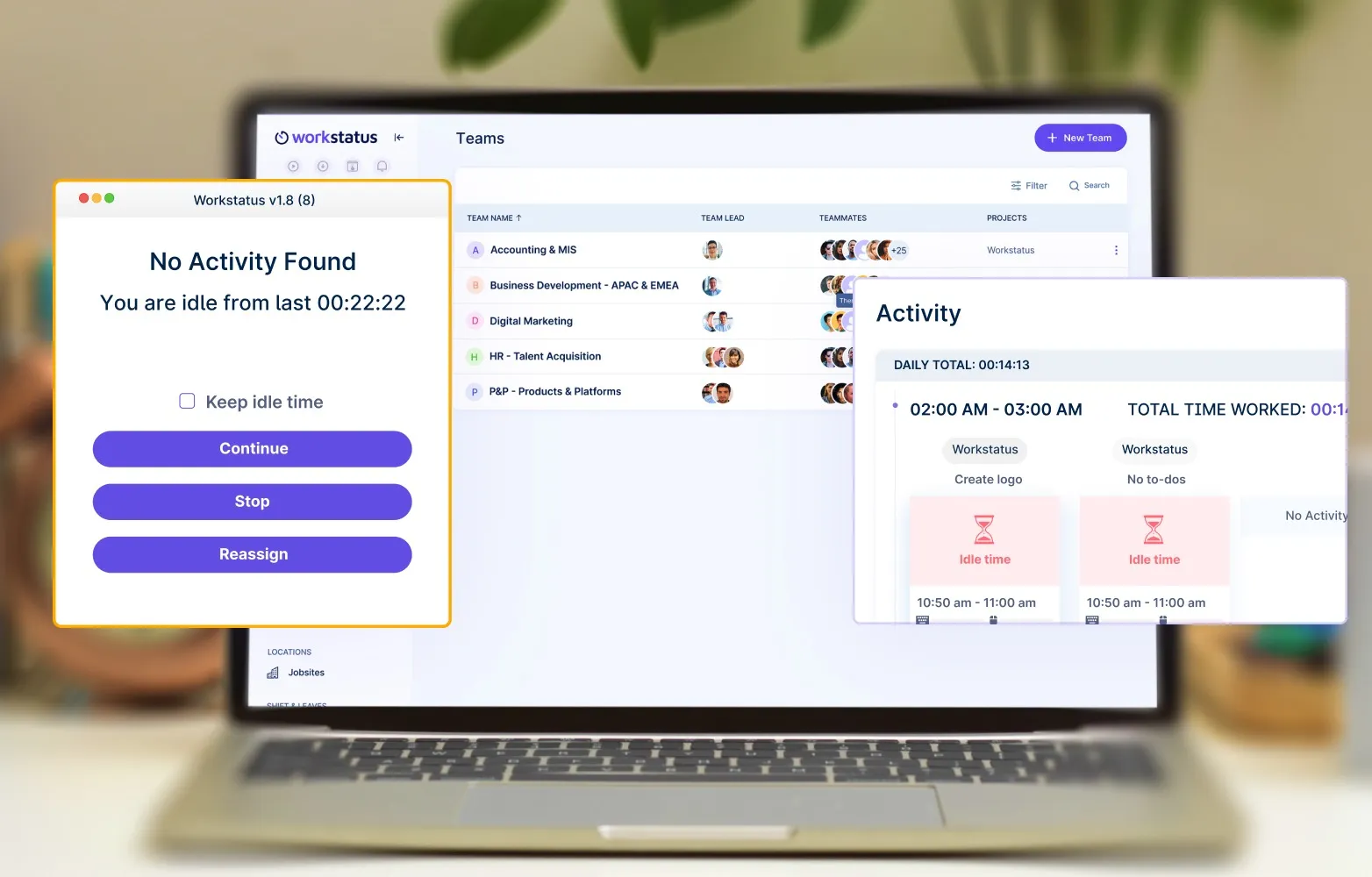 Lost time often goes unnoticed until it’s too late. Someone might look busy on the computer while actually stuck or distracted.
Lost time often goes unnoticed until it’s too late. Someone might look busy on the computer while actually stuck or distracted.
Idle time detection helps solve this:
- Tells the difference between active work and computer time with no activity
- Prevents charging clients for unproductive hours
- Shows when team members might need a break
- Creates honest data about truly productive hours
Any training for time management should address how to spot and reduce unproductive time.
5. Productivity Reports
 Without clear numbers, talks about being productive can feel personal and uncomfortable.
Without clear numbers, talks about being productive can feel personal and uncomfortable.
Managers and teams often see time used very differently.
Workstatus’ simple reports fix this:
- Give real numbers about work patterns over time
- Show improvement as time skills get better
- Help find the most productive hours for better scheduling
- Support coaching based on facts, not opinions
The best time management tools provide clear insights that help everyone work smarter, not just longer.
As time tracking software becomes more widely used, businesses find that simply seeing where time goes is the first step to using it better.
Measuring Success in Time Management Training
Let’s explore how organizations can measure the effectiveness of their time management training for employees.
1. Key Performance Indicators
- Improved deadline compliance – Track how often team members complete tasks on schedule
- Reduced overtime hours – Monitor whether employees are achieving more within standard work hours
- Decreased stress levels – Measure through surveys and feedback sessions
- Enhanced work quality – Assess if better time management correlates with fewer errors
2. Quantifiable Metrics
The most effective way to determine success is through measurable outcomes.
Organizations should establish baseline measurements before training begins and track progress over time.
- Project completion rates
- Meeting efficiency (shorter duration with same or better outcomes)
- Email response times
- Reduction in rework or corrections needed
3. Employee Feedback
Direct input from participants is invaluable when evaluating training effectiveness:
- Self-assessment surveys before and after training
- Regular check-ins to discuss implementation challenges
- Peer feedback on observed changes in work habits
- Identification of productive things to do during previously wasted time
4. Long-Term Impact Assessment
True success isn’t measured in days but months.
Schedule follow-up evaluations at regular intervals (3, 6, and 12 months) to determine if new habits have become permanent work practices.
5. Management Observations
Leaders should watch for visible changes in workplace behaviors:
- More organized workspaces
- Improved meeting preparation
- Better prioritization of tasks
- More thoughtful decision-making
- Create a list of productive things to do
The most effective time management training creates lasting behavioral change that enhances both productivity and employee well-being.
Closing Thoughts
When companies invest in time management training for employees, they plant seeds that grow into remarkable achievements.
The real benefit isn’t just productivity- it’s creating space for creativity and better work-life balance.
Tools like Workstatus complement these efforts perfectly. Its time tracking and productivity features help teams implement new skills while giving managers clear insights into improvements.
Many find this combination of training and technology creates lasting change.
The clock ticks at the same pace for everyone. The difference lies in how we use each minute.
FAQs
Ques. How does Workstatus compare to traditional time tracking methods?
Ans. Workstatus eliminates manual entry errors and provides real-time visibility that paper timesheets or basic digital systems cannot. Its automated reporting saves managers hours each week while providing more accurate data for decision-making.
Ques. How can Workstatus help improve my team’s time management?
Ans. Workstatus offers automatic time tracking, productivity monitoring, and detailed reports to identify efficiency patterns. Its intuitive dashboard helps managers spot opportunities for workflow improvements and better resource allocation.
Ques. What features does Workstatus offer for remote teams?
Ans. Workstatus provides screenshot monitoring, activity levels tracking, and GPS location for field teams. Its automated payroll and integrations with popular project management tools make remote team coordination seamless.





